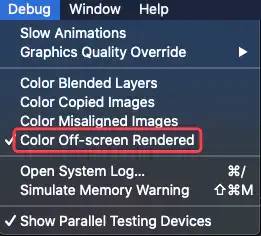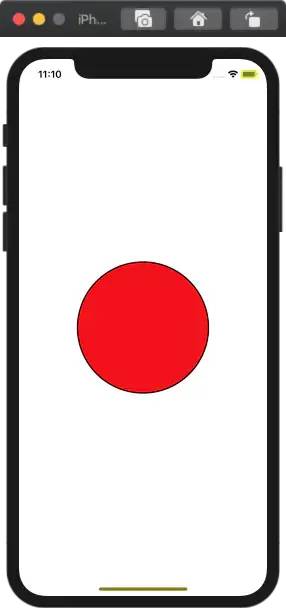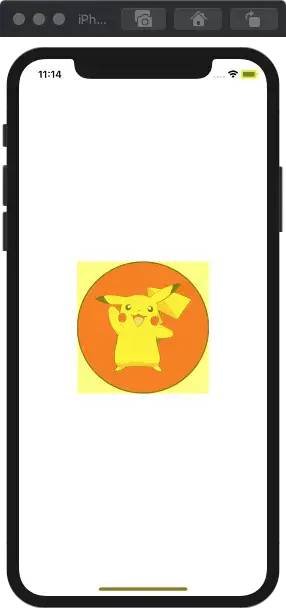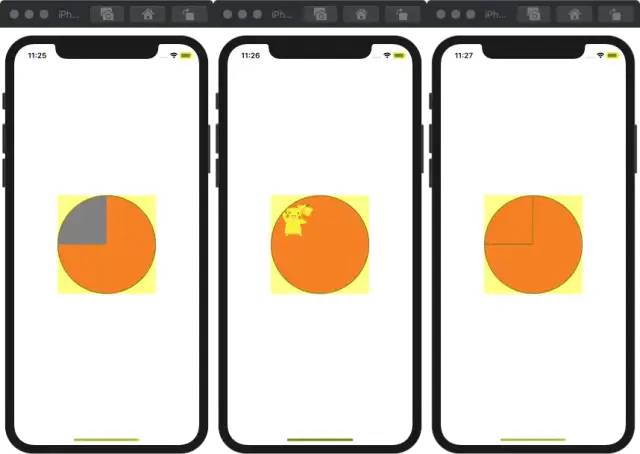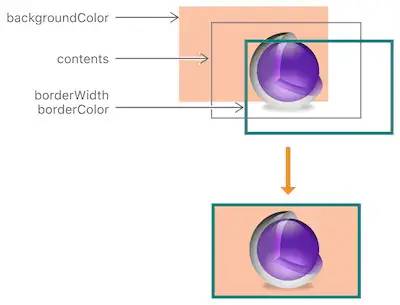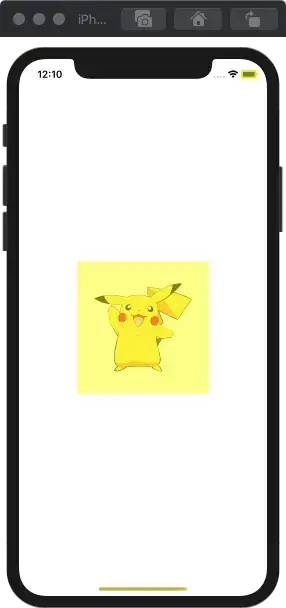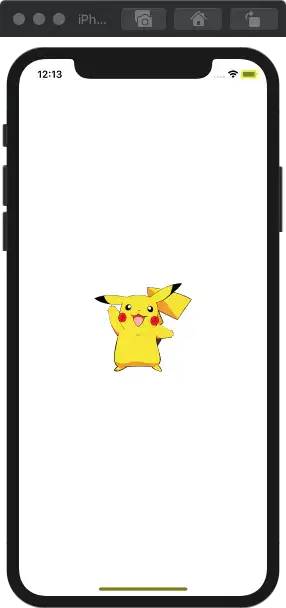iOS圆角的离屏渲染,你真的弄明白了吗
链接: https://juejin.im/post/5f0339505188252e817c6c02
测试环境Xcode 11.4iPhone 11 ProiOS 13.5
1. 如何设置圆角才会触发离屏渲染
我们经常看到,圆角会触发离屏渲染。但其实这个说法是不准确的,因为圆角触发离屏渲染也是有条件的!
我们先来看看苹果官方文档对于cornerRadius的描述:
Setting the radius to a value greater than
0.0causes the layer to begin drawing rounded corners on its background. By default, the corner radius does not apply to the image in the layer’scontentsproperty; it applies only to the background color and border of the layer. However, setting themasksToBoundsproperty totruecauses the content to be clipped to the rounded corners.
我们发现设置cornerRadius大于0时,只为layer的<backgroundColor和border设置圆角;而不会对layer的contents设置圆角,除非同时设置了layer.masksToBounds为true(对应UIView的clipsToBounds属性)。
如果这时,你认为layer.masksToBounds或者clipsToBounds设置为true就会触发离屏渲染,这是不完全正确的。
我们先打开模拟器的离屏渲染颜色标记:
- 不设置
layer.masksToBounds或者clipsToBounds,其默认值为NO
- (void)viewDidLoad {
[super viewDidLoad];
UIView *view1 = [[UIView alloc] initWithFrame:CGRectMake(0, 0, 200.0, 200.0)];
// 设置背景色
view1.backgroundColor = UIColor.redColor;
// 设置边框宽度和颜色
view1.layer.borderWidth = 2.0;
view1.layer.borderColor = UIColor.blackColor.CGColor;
// 设置圆角
view1.layer.cornerRadius = 100.0;
view1.center = self.view.center;
[self.view addSubview:view1];
}我们看到只有背景色、边框以及圆角的时候,确实不会触发离屏渲染。
- 设置
layer.masksToBounds或者clipsToBounds为YES
- (void)viewDidLoad {
[super viewDidLoad];
UIView *view1 = [[UIView alloc] initWithFrame:CGRectMake(0, 0, 200.0, 200.0)];
// 设置背景色
view1.backgroundColor = UIColor.redColor;
// 设置边框宽度和颜色
view1.layer.borderWidth = 2.0;
view1.layer.borderColor = UIColor.blackColor.CGColor;
// 设置圆角
view1.layer.cornerRadius = 100.0;
// 设置裁剪
view1.clipsToBounds = YES;
view1.center = self.view.center;
[self.view addSubview:view1];
}当我们开启layer.masksToBounds或者clipsToBounds时,同样的没有触发离屏渲染。这是因为我们还没有设置图片。
- 设置
layer.masksToBounds或者clipsToBounds为YES,同时设置图片
- (void)viewDidLoad {
[super viewDidLoad];
UIView *view1 = [[UIView alloc] initWithFrame:CGRectMake(0, 0, 200.0, 200.0)];
// 设置背景色
view1.backgroundColor = UIColor.redColor;
// 设置边框宽度和颜色
view1.layer.borderWidth = 2.0;
view1.layer.borderColor = UIColor.blackColor.CGColor;
//设置图片
view1.layer.contents = (__bridge id)[UIImage imageNamed:@"pkq"].CGImage;
// 设置圆角
view1.layer.cornerRadius = 100.0;
// 设置裁剪
view1.clipsToBounds = YES;
view1.center = self.view.center;
[self.view addSubview:view1];
}当我们开启layer.masksToBounds或者clipsToBounds时,同时设置图片时,就会触发离屏渲染。
-
其实不光是图片,我们为视图添加一个有颜色、内容或边框等有图像信息的子视图也会触发离屏渲染。
有图像信息还包括在视图或者layer的draw方法中进行绘制等。
- (void)viewDidLoad {
[super viewDidLoad];
UIView *view1 = [[UIView alloc] initWithFrame:CGRectMake(0, 0, 200.0, 200.0)];
// 设置背景色
view1.backgroundColor = UIColor.redColor;
// 设置边框宽度和颜色
view1.layer.borderWidth = 2.0;
view1.layer.borderColor = UIColor.blackColor.CGColor;
// 设置圆角
view1.layer.cornerRadius = 100.0;
// 设置裁剪
view1.clipsToBounds = YES;
// 子视图
UIView *view2 = [[UIView alloc] initWithFrame:CGRectMake(0, 0, 100.0, 100.0)];
// 下面3个任何一个属性
// 设置背景色
view2.backgroundColor = UIColor.blueColor;
// 设置内容
view2.layer.contents = (__bridge id)([UIImage imageNamed:@"pkq"].CGImage);
// 设置边框
view2.layer.borderWidth = 2.0;
view2.layer.borderColor = UIColor.blackColor.CGColor;
[view1 addSubview:view2];
view1.center = self.view.center;
[self.view addSubview:view1];
}2. 圆角触发离屏渲染的真正原因
图层的叠加绘制大概遵循“画家算法”。
油画算法:先绘制场景中的离观察者较远的物体,再绘制较近的物体。
先绘制红色部分,再绘制⻩色部分,最后再绘制灰⾊部分,即可解决隐藏面消除的问题。即将场景按照物理距离和观察者的距离远近排序,由远及近的绘制即可。
当我们设置了cornerRadius以及masksToBounds进行圆角+裁剪时,masksToBounds裁剪属性会应用到所有的图层上。
本来我们从后往前绘制,绘制完一个图层就可以丢弃了。但现在需要依次在 Offscreen Buffer中保存,等待圆角+裁剪处理,即引发了 离屏渲染 。
-
背景色、边框、背景色+边框,再加上圆角+裁剪,根据文档说明,因为 contents = nil 没有需要裁剪处理的内容,所以
masksToBounds设置为YES或者NO都没有影响。 -
一旦我们 为contents设置了内容 ,无论是图片、绘制内容、有图像信息的子视图等,再加上圆角+裁剪,就会触发离屏渲染。
不一定是直接为contents赋值!
3. iOS9及以后的优化
关于圆角,iOS 9及之后的系统版本,苹果进行了一些优化。
layer.contents/imageView.image
我们只设置contents或者UIImageVimage,并加上圆角+裁剪,是不会产生离屏渲染的。但如果加上了背景色、边框或其他有图像内容的图层,还是会产生离屏渲染。
- (void)viewDidLoad {
[super viewDidLoad];
UIView *view1 = [[UIView alloc] initWithFrame:CGRectMake(0, 0, 200.0, 200.0)];
//设置图片
view1.layer.contents = (__bridge id)[UIImage imageNamed:@"qiyu"].CGImage;
// 设置圆角
view1.layer.cornerRadius = 100.0;
// 设置裁剪
view1.clipsToBounds = YES;
view1.center = self.view.center;
[self.view addSubview:view1];
}
其实这也是可以理解的,因为只有 单层 内容需要添加圆角和裁切,所以可以不需要用到离屏渲染技术。但如果加上了背景色、边框或其他有图像内容的图层,就会产生为 多层 添加圆角和裁切,所以还是会触发离屏渲染(如1中的第3个例子)。
所以,我们在使用类似于UIButton的视图的时候需要注意:
UIButton
- (void)viewDidLoad {
[super viewDidLoad];
self.view.backgroundColor = [UIColor whiteColor];
// 创建一个button视图
UIButton *button = [[UIButton alloc] initWithFrame:CGRectMake(0, 0, 200.0, 200.0)];
//设置图片
[button setImage:[UIImage imageNamed:@"pkq"] forState:UIControlStateNormal];
button.center = self.view.center;
[self.view addSubview:button];
}我们为UIButton设置一个图片,其实会添加一个UIImageView。
为UIButton添加圆角和裁剪,则会触发离屏渲染。
我// 设置圆角
button.layer.cornerRadius = 100.0;
// 设置裁剪
button.clipsToBounds = YES;-
如果改为
UIButton中的UIImageView添加圆角和裁剪,则 不会触发离屏渲染。// 设置圆角 button.imageView.layer.cornerRadius = 100.0; // 设置裁剪 button.imageView.clipsToBounds = YES; 复制代码
